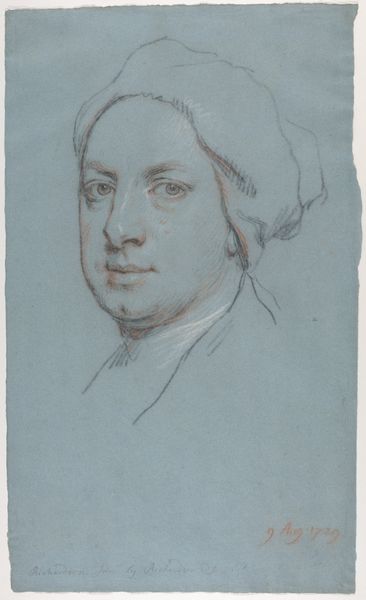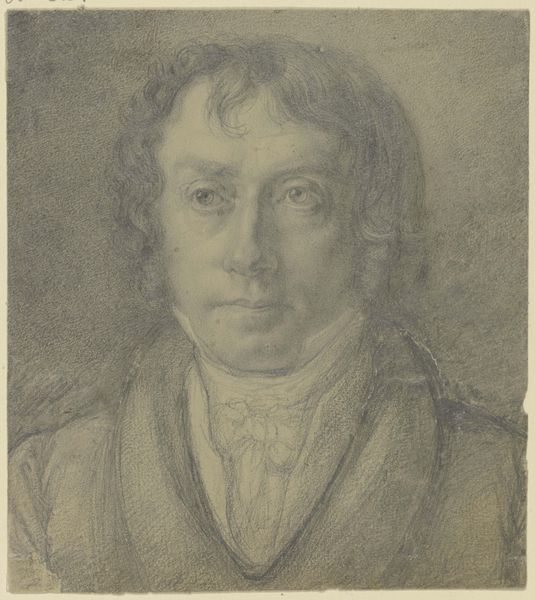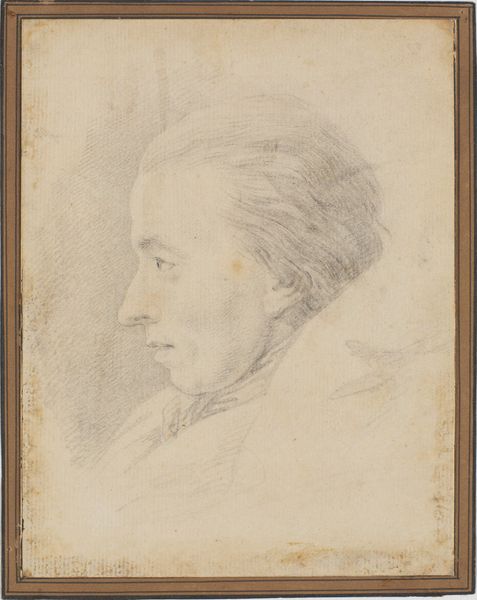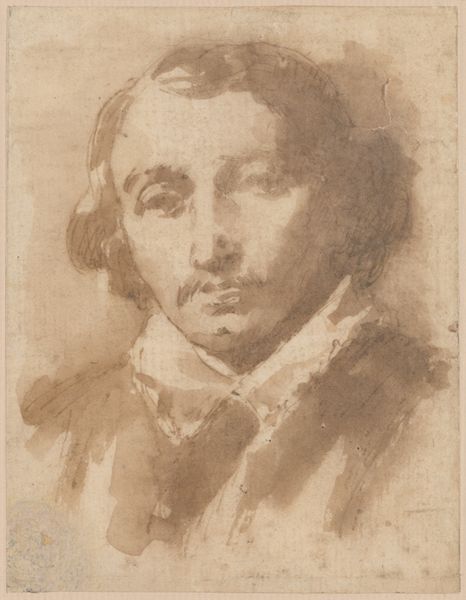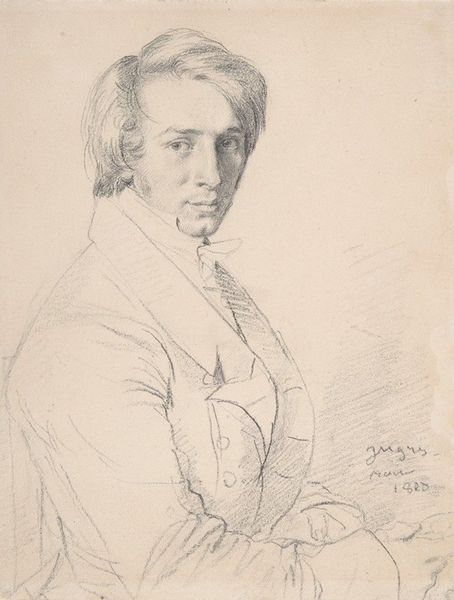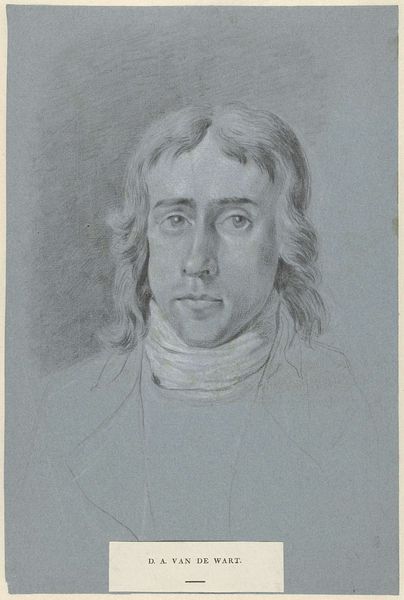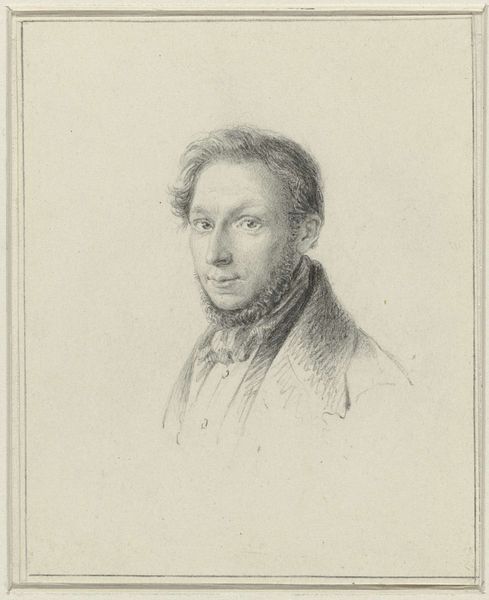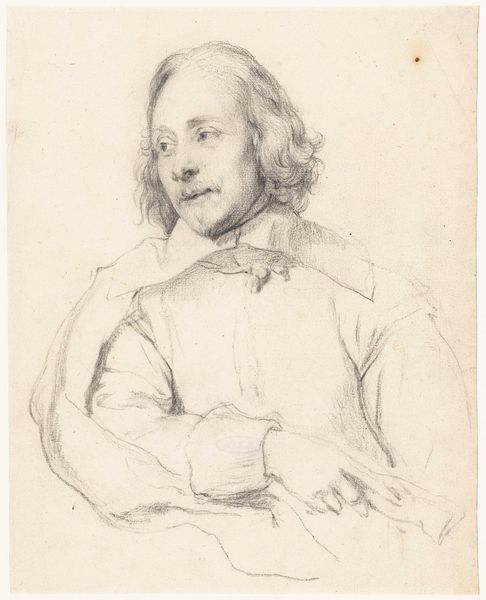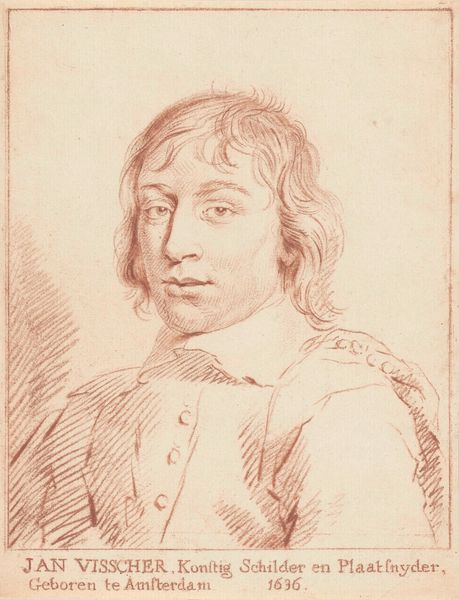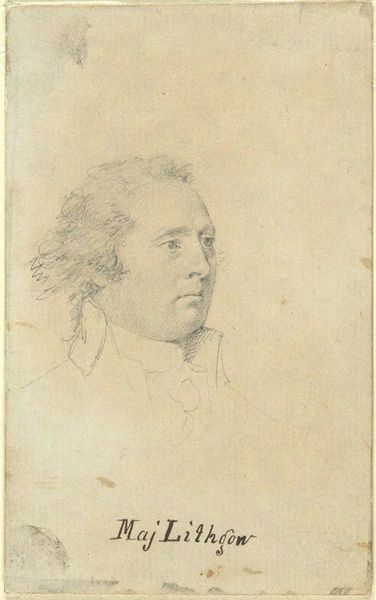
Dimensions: overall: 31 x 23.3 cm (12 3/16 x 9 3/16 in.)
Copyright: National Gallery of Art: CC0 1.0
Editor: This is Edgar Degas’s "Self-Portrait," made around 1855, using pencil on paper. It's rendered in sanguine, giving it a warm, almost nostalgic feeling, but the expression seems rather solemn. What do you see in this piece? Curator: I see a young man carefully constructing his identity, aware of the gaze that falls upon him, but also introspective. Consider the symbolic weight of the gaze in portraiture, it’s always a dance between revealing and concealing. What memories, what ideals does he embed in these lines for us? Editor: That’s a fascinating point. The lines *are* very deliberate, even though it's just a drawing. Is there a visual tradition Degas is engaging with here? Curator: Certainly. Remember the academic tradition, the importance of line, particularly in Ingres, whom Degas admired. This portrait recalls those crisp, Neoclassical lines, but already there's an air of Impressionistic freedom. But notice, too, the careful control—his unwavering eyes—he wants to be seen, but on his own terms. What message does this portrait attempt to convey to his audience? Editor: Perhaps an artist confident in his talent, ready to challenge the conventions? Curator: Perhaps. It's a fascinating moment: Degas both reveres tradition and prepares to break from it, capturing a potent emotional ambiguity within the very core of self-representation. Consider that, by carefully choosing which symbols to incorporate and exclude, he can ensure a cultural legacy according to his intention. What do you think he wanted us to remember about him? Editor: This really enriches my understanding of not just Degas, but of the artistic self-fashioning itself. Thank you. Curator: My pleasure. Every mark is a trace of memory.
Comments
No comments
Be the first to comment and join the conversation on the ultimate creative platform.
